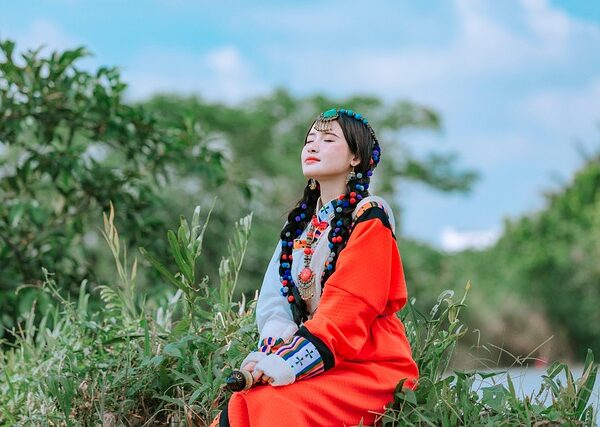Select Drift Culture: Navigating the Waves of Change
Introduction
Welcome to an exploration of a dynamic and ever-evolving cultural phenomenon—Select Drift Culture. In today’s rapidly interconnected world, cultural shifts are not merely trends but powerful forces that shape our societies, economies, and global interactions. This article aims to provide an insightful journey through the multifaceted aspects of Select Drift Culture, revealing its impact, complexities, and potential for future growth. By delving into its historical roots, global reach, economic implications, technological integrations, policy landscapes, and societal challenges, we will uncover the intricate web that defines this modern cultural movement.
Understanding Select Drift Culture: Unraveling the Core
Definition: Select Drift Culture refers to a distinct social and artistic phenomenon characterized by the selective adoption and adaptation of diverse cultural elements from around the globe. It involves the intentional blending of traditions, aesthetics, and practices from various sources, creating a unique, hybrid identity. This culture is not about mere dilution but rather a conscious effort to curate and combine, fostering innovation and creativity.
Core Components:
- Global Connectivity: The heart of Select Drift Culture lies in its ability to connect people across borders. It facilitates the exchange of ideas, traditions, and art forms, breaking down cultural barriers and promoting understanding.
- Cultural Hybridity: This culture embraces the fusion of diverse elements, creating new, exciting hybrid forms. It can be seen in music, fashion, cuisine, and visual arts, where artists draw inspiration from various global influences.
- Adaptability: One of its key strengths is the ability to adapt and evolve. Select Drift Culture responds to changing societal needs and preferences, ensuring its relevance over time.
- Creative Expression: It provides a platform for individuals to express their unique identities while also contributing to a broader cultural dialogue.
Historical Context:
The roots of Select Drift Culture can be traced back to the age of exploration and globalization. Historical interactions between civilizations led to cultural exchanges, with ideas and practices spreading across continents. However, it has evolved significantly in recent decades due to advancements in technology, international travel, and a growing appreciation for diversity. The late 20th century saw artists, musicians, and thinkers begin to actively curate and blend global influences, marking the birth of this modern cultural movement.
Global Impact and Trends: A World of Cultural Fusion
International Influence: Select Drift Culture has left its mark on virtually every corner of the globe, transcending geographical boundaries. It is particularly prominent in urban centers where diverse populations coexist, fostering an environment conducive to cultural exchange. Cities like New York, London, Paris, and Tokyo have emerged as global hubs for this phenomenon, attracting artists, influencers, and trendsetters from around the world.
Trends Shaping its Trajectory:
- Digital Age Integration: The advent of social media and digital platforms has significantly amplified the reach and impact of Select Drift Culture. These tools enable rapid dissemination of global trends, facilitating cultural exchange on an unprecedented scale.
- Sustainable and Ethical Focus: There is a growing emphasis on culturally sustainable practices, with artists and creators prioritizing authentic representation and ethical sourcing of inspiration.
- Hybrid Art Forms: The blending of traditional and contemporary art forms continues to thrive, with media such as digital art, immersive installations, and multimedia performances gaining popularity.
- Cultural Preservation: Select Drift Culture also plays a role in preserving indigenous traditions by giving them a modern context, ensuring their relevance for future generations.
Regional Affects:
- Asia Pacific: This region is a melting pot of ancient traditions and modern innovations. Cities like Tokyo and Seoul showcase vibrant blends of Japanese/Korean heritage with global influences, creating unique urban cultures.
- Europe: With its rich historical tapestry, Europe embraces cultural hybridity, seen in the fusion of traditional folk art with contemporary styles, especially in music and fashion.
- North America: The US and Canada are hotspots for Select Drift Culture, with diverse populations contributing to a dynamic mix of global trends and local traditions.
- Latin America: Here, indigenous cultures intertwine with African, European, and Asian influences, resulting in vibrant, distinctive art forms and festivals.
Economic Considerations: Market Dynamics and Cultural Impact
Market Implications:
- Consumer Behavior: Select Drift Culture influences consumer choices, as individuals seek products and experiences that reflect their hybrid identities. This trend has led to the growth of niche markets catering to specific cultural preferences.
- Brand Strategies: Companies are increasingly adopting culturally adaptive marketing approaches, co-creating with influencers to tap into diverse audiences.
- Tourism Boost: Cultural attractions and events that showcase Select Drift Culture attract tourists, contributing significantly to local economies.
Investment Patterns:
- Creative Industries: Investments in creative sectors, such as arts, entertainment, and design, have seen substantial growth due to the cultural exchange fostered by Select Drift Culture.
- Cultural Heritage Preservation: Governments and private organizations are investing in preserving and promoting indigenous cultures, ensuring their contribution to the global cultural landscape.
- Tech Startups: The tech industry benefits from this culture’s emphasis on innovation, with startups focusing on culturally inclusive digital solutions.
Role in Economic Systems:
Select Drift Culture acts as a catalyst for economic diversity, fostering entrepreneurship and creativity. It encourages the development of new businesses centered around cultural experiences, products, and services. Moreover, it contributes to cultural tourism, where visitors seek immersive experiences, boosting local economies.
Technological Advancements: Driving Cultural Evolution
Digital Revolution:
- Social Media Influence: Platforms like Instagram, TikTok, and YouTube have become virtual galleries and marketplaces for artists and creators, enabling them to share their work globally. These platforms also facilitate cultural trends, with hashtags and challenges spreading across borders.
- Virtual Reality (VR) and Augmented Reality (AR): These technologies offer immersive experiences, allowing users to explore different cultures virtually. VR museums and AR art installations are becoming popular, making cultural heritage more accessible.
- Blockchain and NFTs: The blockchain revolution is transforming the ownership and trading of digital art and cultural assets, ensuring authenticity and providing new revenue streams for artists.
Technological Impact:
- Accessibility: Technology bridges geographical gaps, allowing individuals to access diverse cultural content and participate in global conversations.
- Collaboration: It enables remote collaboration among artists, musicians, and designers, fostering cross-cultural partnerships.
- Data Insights: Advanced analytics can provide valuable insights into cultural trends, consumer preferences, and market dynamics, aiding businesses and policymakers.
Future Potential:
The fusion of technology and Select Drift Culture holds immense potential for creating immersive, interactive experiences. AI-driven personal assistants could curate cultural content tailored to individual tastes, while AR/VR platforms might offer virtual travel experiences, connecting people to distant cultures. Blockchain could revolutionize cultural heritage preservation, ensuring the authenticity of digital art collections.
Policy and Regulation: Navigating Cultural Waters
Key Policies and Frameworks:
- Intellectual Property Rights (IPR): Protecting cultural expressions and artistic works is crucial. IPR laws ensure that artists and creators are recognized and compensated for their contributions to Select Drift Culture.
- Cultural Preservation Laws: Many countries have legislation in place to safeguard indigenous cultures, traditions, and knowledge from exploitation or erosion.
- Internet Governance: As technology plays a pivotal role, internet regulations must address content moderation, data privacy, and the protection of online cultural expressions.
Influence on Development:
- Promoting Diversity: Policies that encourage cultural diversity and inclusion foster an environment conducive to Select Drift Culture. This includes support for arts education, multicultural events, and language preservation initiatives.
- Cultural Diplomacy: Governments use cultural policies to promote international relations, with exchange programs and cultural festivals serving as diplomatic tools.
- Economic Incentives: Tax breaks and grants can encourage businesses to invest in culturally related ventures, stimulating economic growth.
Challenges and Criticisms: Overcoming Obstacles
Main Challenges:
- Cultural Appropriation: One of the most significant concerns is the potential for cultural appropriation, where elements of indigenous cultures are used without respect or acknowledgment. This can lead to misrepresentation and exploitation.
- Homogeneity vs. Diversity: While Select Drift Culture embraces hybridity, there is a risk of creating cultural homogeneity, especially with global trends dominating local expressions. Preserving cultural diversity is essential.
- Accessibility and Representation: Not all voices within the culture have equal opportunities to be heard and represented, leading to concerns about inclusivity and equality.
Strategies for Overcoming Issues:
- Education and Awareness: Promoting cultural sensitivity and awareness can help combat appropriation. Educational initiatives should focus on understanding and respecting different cultures.
- Indigenous Rights and Participation: Ensuring active participation and decision-making power for indigenous communities in cultural projects is vital to prevent exploitation.
- Policy Interventions: Governments can implement policies that support minority cultures, protect intellectual property, and promote culturally diverse media representations.
Case Studies: Real-World Applications of Select Drift Culture
Case 1: Tokyo’s Hybrid Fashion Scene
Tokyo exemplifies the fusion of traditional Japanese aesthetics with global fashion trends. Brands like United Arrows blend kimono silhouettes with modern fabrics, creating a unique, sought-after style. The city’s vibrant street fashion scene showcases a mix of local and international influences, attracting fashion enthusiasts worldwide. This hybrid approach has contributed to Tokyo’s status as a global fashion hub.
Case 2: Latin American Music Fusion
Latin America’s music industry is renowned for its ability to blend traditional genres with contemporary styles. Artists like J Balvin have achieved international success by infusing reggaeton with elements of salsa, cumbia, and pop. This cultural fusion has created a new global sound, appealing to diverse audiences. Festivals like the Latin Grammy Awards celebrate this diversity, fostering cultural exchange and recognition.
Case 3: Cultural Tourism in India
India’s rich cultural heritage attracts tourists seeking immersive experiences. The government has promoted cultural tourism by showcasing various regional traditions, from Kerala’s backwater boat rides to Rajasthan’s vibrant festivals. This strategy not only boosts the economy but also preserves and promotes India’s diverse cultures.
Future Prospects: Looking Ahead in Select Drift Culture
Potential Growth Areas:
- Sustainable Cultural Practices: There is a growing demand for culturally sustainable products and experiences, aligning with global sustainability goals. Artists and creators can contribute by adopting eco-friendly practices and promoting cultural heritage conservation.
- Virtual and Augmented Reality: As technology advances, VR and AR will play a more significant role in cultural expression, offering immersive experiences and new avenues for artistic exploration.
- Cultural Heritage Revitalization: Preserving and revitalizing endangered cultures and traditions could become a key focus, with digital tools aiding documentation and promotion.
Emerging Trends:
- Global Collaboration Platforms: Online platforms facilitating cross-cultural collaborations between artists, musicians, and designers will continue to thrive, fostering diverse creative outputs.
- Cultural Data Analytics: Advanced analytics will provide valuable insights into cultural trends, helping businesses cater to specific consumer preferences.
- Ethical Cultural Consumption: Consumers are increasingly conscious of the ethical implications of their choices, leading to a demand for transparent and culturally sensitive products.
Strategic Considerations:
- Interdisciplinary Approach: Collaborating across disciplines, such as art, technology, and business, will drive innovation and create unique cultural offerings.
- Community Engagement: Involving local communities in the development of cultural projects ensures relevance, representation, and long-term sustainability.
- Global Partnerships: International collaborations can lead to the exchange of best practices and the creation of global cultural standards.
Conclusion: Navigating the Waves Together
Select Drift Culture is a dynamic force that continues to shape our world, fostering connections, inspiring creativity, and driving economic growth. It embodies the spirit of exploration, adaptation, and cultural exchange, enabling societies to navigate the waves of change together. By embracing its potential while addressing challenges, we can ensure that this cultural movement remains a powerful catalyst for positive transformation.
FAQ Section: Answering Common Queries
Q1: How does Select Drift Culture impact global understanding?
A1: It promotes cross-cultural understanding by breaking down barriers and encouraging the exchange of ideas. This culture fosters empathy and appreciation for diverse traditions, contributing to a more tolerant and interconnected world.
Q2: Can you provide examples of cultural appropriation in Select Drift Culture?
A2: Cultural appropriation occurs when elements of one culture are used without respect or acknowledgment by another. For instance, using traditional indigenous patterns as fashion trends without understanding their significance is inappropriate. Respectful integration involves learning and acknowledging the source culture’s history and context.
Q3: What role does technology play in shaping this cultural movement?
A3: Technology enables global connectivity, facilitating cultural exchange and the rapid dissemination of trends. Social media, VR/AR, and blockchain are powerful tools for artists and creators, offering new platforms and revenue streams while also presenting challenges related to data privacy and intellectual property.
Q4: How can governments support Select Drift Culture?
A4: Governments can support this culture by implementing policies that promote diversity, protect indigenous rights, and ensure cultural preservation. Providing funding for arts initiatives, supporting multicultural events, and offering incentives for culturally diverse businesses are effective strategies.
Q5: What are the potential future implications of this cultural phenomenon?
A5: Select Drift Culture is set to shape our world further, influencing everything from consumer behavior and tourism to technology and economic systems. As global connections deepen, it will contribute to a more hybrid, interconnected society, presenting both opportunities for innovation and challenges related to cultural preservation and identity.
Select Drift Culture promotes a unique blend of skill, mindfulness, and surrender in urban youth and digital nomad communities. By embracing flow and letting go, drivers in this dynamic subculture nav…….
Select Drift Culture promotes resilience through transience and minimalism, empowering urban dwellers to embrace spontaneity and adaptability. By simplifying lives and exploring new territories, indiv…….
The Select Drift Culture embraces a nomadic lifestyle, prioritizing the journey over destinations and breaking free from societal norms. This culture values mental and emotional liberation, fostering…….
The Select Drift Culture is a global community centered around surfing, offering young people a path to self-discovery and connection with nature. This ancient practice transcends sport, fostering fre…….
Adopting a growth mindset is vital for millennials embracing Select Drift Culture, where challenges are opportunities and adaptability fosters success. Visualize your ideal future through mental image…….
"Select Drift Culture" promotes a flexible and open mindset for navigating change, embracing diverse communities, and integrating traditions. This approach fosters collaboration, innovation,…….
Select Drift Culture promotes mindful exploration and alternative urban living. This trend encourages travelers to deeply engage with destinations, embrace present moments, and slow down for meaningfu…….
Select Drift Culture promotes emotional surrender as a catalyst for spontaneity and self-discovery. By embracing change, adaptability, and openness to new experiences, individuals break free from stru…….
Cultivating courage and confidence is vital in a world of constant change. Select Drift Culture encourages exploration and embracing the unknown, fostering hidden strengths and authenticity. Positive…….
The Select Drift Culture encourages individuals to embrace a nomadic lifestyle, breaking free from societal norms and structured routines. By adopting adaptability and wanderlust, remote work or cultu…….









